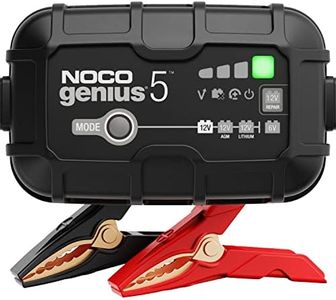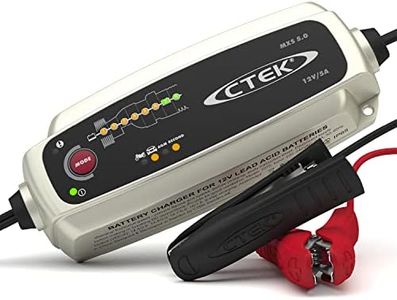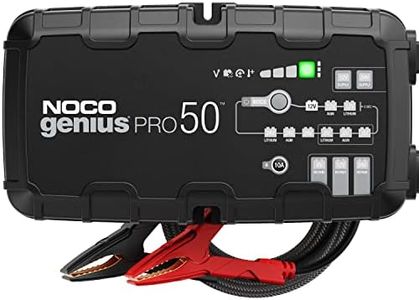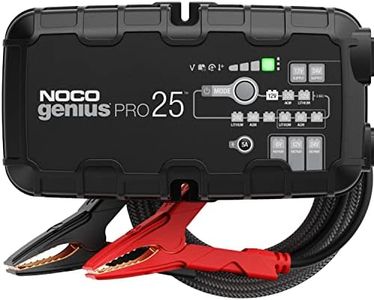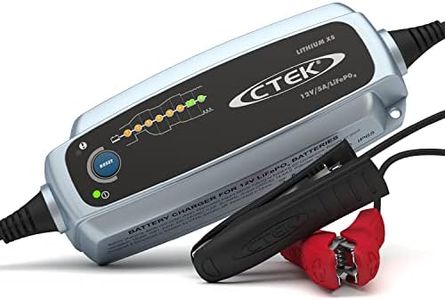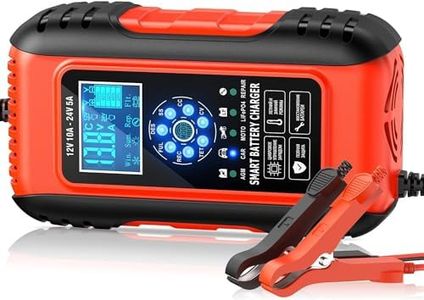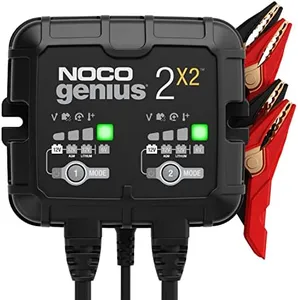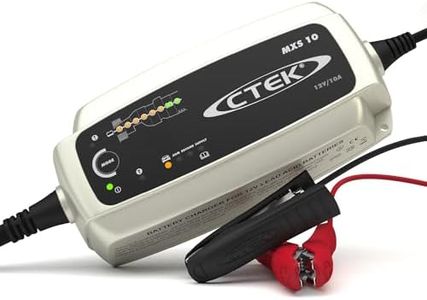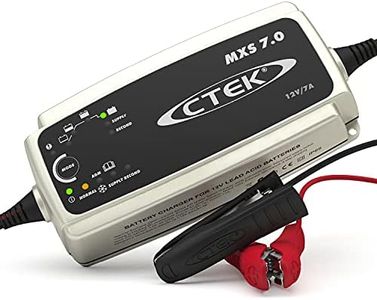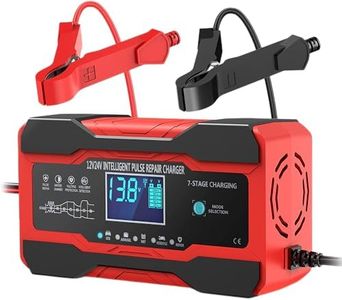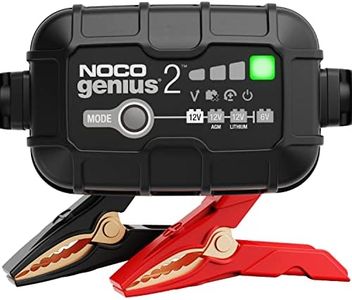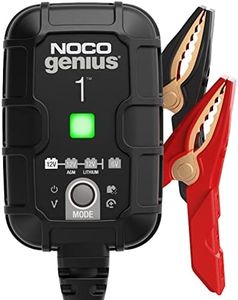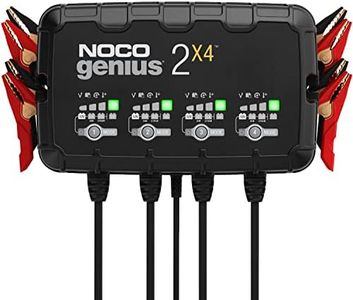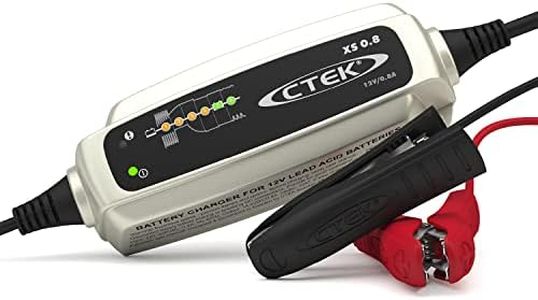We Use CookiesWe use cookies to enhance the security, performance,
functionality and for analytical and promotional activities. By continuing to browse this site you
are agreeing to our privacy policy
10 Best Trickle Charger Car Batteries
From leading brands and best sellers available on the web.Buying Guide for the Best Trickle Charger Car Batteries
When choosing a trickle charger for car batteries, your main goal is to keep your battery healthy and ready to go without overcharging it. A trickle charger slowly delivers a low, consistent charge to a car battery, making it perfect for vehicles not used often or stored for extended periods. To pick the best trickle charger, you should know about a few important features. Understanding these features will help you match a trickle charger to both your battery type and your usage habits so your car is always ready when you need it.Output AmperageOutput amperage describes the rate at which a trickle charger delivers electrical current to your car battery. This is important because a lower amperage means a slower, gentler charge, which is safer for long-term battery maintenance. Trickle chargers typically output between 0.5 and 2 amps. Chargers at the lower end (0.5 to 1 amp) are ideal for batteries in storage or rarely used vehicles, while higher outputs (1.5 to 2 amps) can top up batteries a bit faster but might be unnecessary for maintenance purposes. Consider how often you use your vehicle – if you store it for months, lower amperage is safer and reduces risk of overcharging.
Automatic Shut-Off/Float ModeThis feature ensures the trickle charger automatically stops charging or switches to a maintenance (float) mode once the battery is fully charged. It’s crucial because it protects the battery from overcharging, which can shorten its life or cause damage. Some chargers just keep charging, while others monitor the battery and adjust as needed. If you’re not checking on your charger often, always choose an automatic shut-off or float mode for peace of mind and battery safety.
Battery CompatibilityCar batteries come in several types, such as lead-acid, AGM (Absorbed Glass Mat), and gel. Not all trickle chargers support all types. This matters because using an incompatible charger can damage the battery or reduce charging efficiency. Check your vehicle’s battery and match the trickle charger’s listed compatibility. If you have standard wet-cell or AGM batteries, most chargers will work. If your battery is a gel or lithium type, confirm the charger is designed for it.
Voltage SelectionMost cars use 12-volt batteries, but some vehicles (especially classic cars, motorcycles, or specialty equipment) might use 6-volt batteries. The voltage setting on your charger must match your battery’s voltage. Many chargers are fixed at 12 volts, but some offer a switchable 6/12-volt setting or even automatic detection. If you’ll be charging different vehicle batteries, a charger with selectable voltage adds flexibility.
Safety FeaturesSafety features protect both the battery and the user. These can include reverse polarity protection (prevents operation if you connect the clamps the wrong way), spark-proof clamps, and short-circuit protection. These features are important to prevent accidents or damage during hookup and operation. If you are not experienced with car maintenance, prioritize chargers with multiple safety features to make charging hassle-free and safer.
